Today, mobile phones fit in the palm of our hands, and laptops fit in our bags, making communication seem compact and accessible. But, the history of phones goes way back.
Teenagers today may not have experienced this, but in the olden days, before the time of the convenient handheld mobile phone, telephones had cords and antennas.
Telephone systems were usually entirely analog devices with little digital screens. At that time, no one imagined that digital cordless phones would come and take over the market.
Just like cell phones did not come out of anywhere, the telephone system has a series of predecessors too.
Here is a brief history of the telephone, beginning from the earliest forms of audio transmission to the invention of the first cell phone:
Table of Contents
The History of Phones: The Earliest Audio Communication Devices
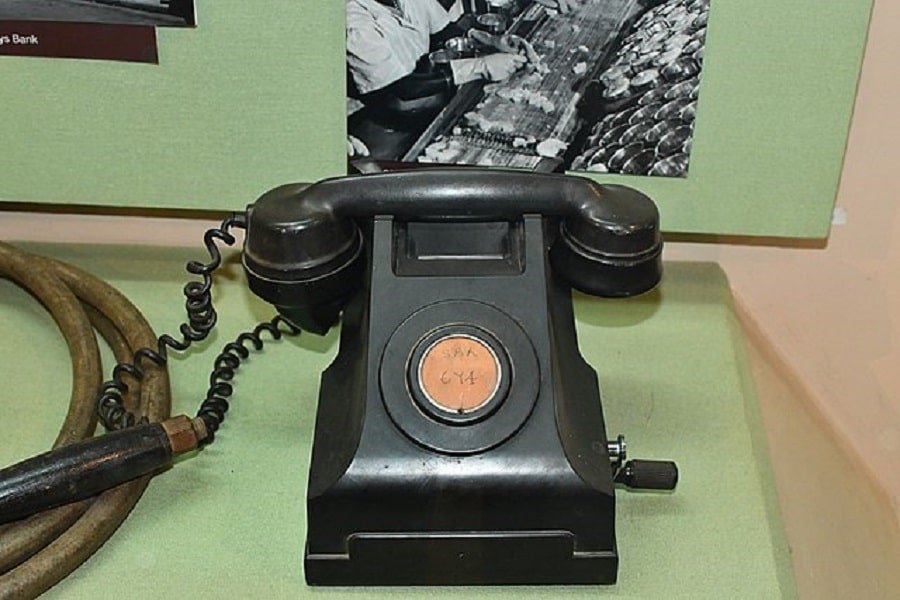
With the industrial revolution in full swing and wars becoming increasingly mechanical, it was only a matter of time before someone came along with the idea of audio transmission.
There are a few devices that preceded and, consequently, led to the invention of the telephone:
Mechanical Devices
Mechanical and acoustic devices for the transmission of speech and music go back a long way. As far back as the 17th century, people were experimenting with pipes, strings, and similar media to transmit sound.
The earliest examples of this phenomenon were acoustic in nature like the tin can telephone.
Tin Can Telephone
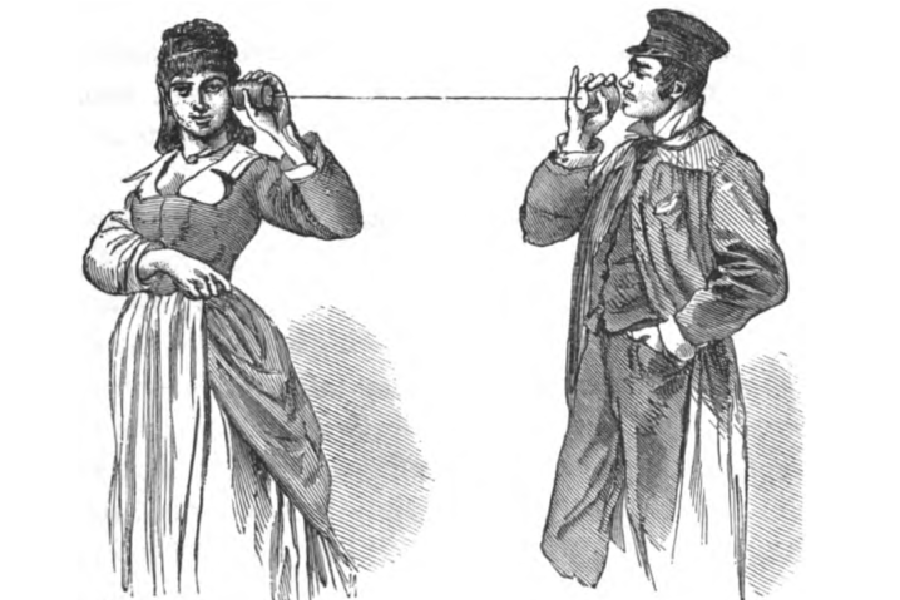
A tin can telephone network was a rudimentary speech-transmitting device. If we can do away with the fancy words, it was just two cans or paper cups attached by a string.
The sound from one end would be converted into solid vibrations, also known as mechanical telephony, travel through the string and be converted back into audible sound.
Today, tin can telephones are used in science classes to demonstrate the role of vibrations in producing sound.
In the 17th century, Robert Hooke was known for conducting such experiments. He is also credited for creating an acoustic phone in 1667.
Tin can phones, or their later models, known as the lover’s telephone, were marketed in competition with the electrical telephone service in the late 19th century.
It was obviously hard to compete against a more sophisticated product and so, acoustic telephone companies quickly went out of business.
Speaking Tube
A speaking tube is exactly what it sounds like: two cones connected by an air pipe. It can transmit speech over long distances.
The father of empiricism and an influential figure of the Scientific Revolution that preceded the Enlightenment, Francis Bacon was responsible for suggesting the use of pipes for transmitting speech.
Speaking tubes were used in intra-ship communications, military aircraft, expensive automobiles, and expensive homes. But, it was another one of those gimmicky technologies that could not sustain its market against the roaring progress of the telephone.
Electrical Telegraph
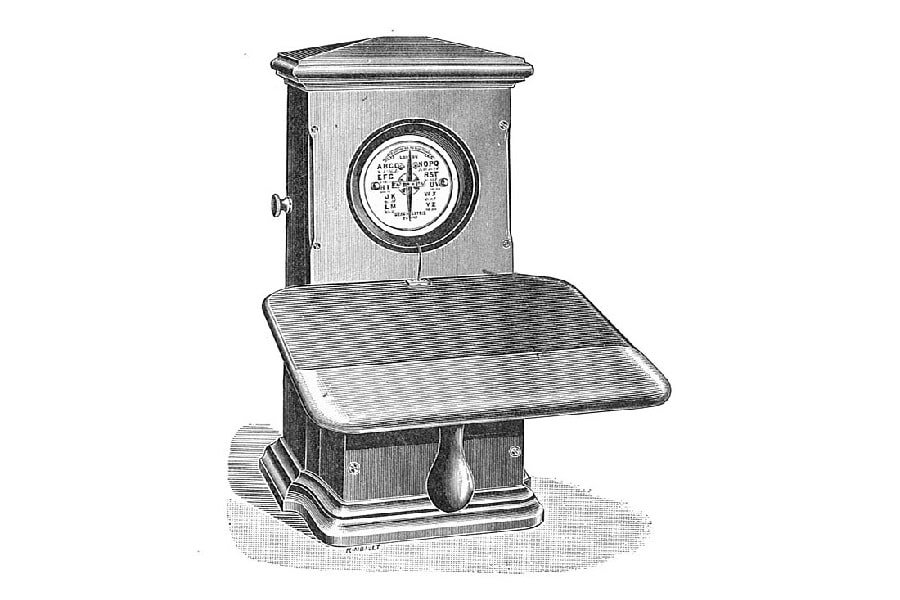
An electrical telegraph was almost like the first telephone service in the world. But, it did not send and receive calls. It communicated messages.
So, it was basically the world’s first SMS service.
The precursor to the cell phone in some ways, the electrical telegraph was a point-to-point messaging system.
On the sending side, switches would control the flow of current to telegraph wires. The receiving device would use an electromagnetic charge to form the representation of the sent information.
One of the first practical applications of electrical engineering, it existed in various forms. In its two most popular forms, it existed as a needle telegraph and as a telegraph sounder.
All of these technologies remained – to some extent – in commercial use until the electrical telephone came along.
Who Invented the Telephone?
People often begin the history of the telephone with Alexander Graham Bell. It’s not a bad place to start. But, what would you say if I told you that it was not Alexander Graham Bell who created the first telephone?
At least, not technically.
Quite often, tracking the original inventor of a new device can be quite tricky. The history of the telephone is certainly one such instance.
It has remained a controversial topic over the years, garnering much attention from historians and scholars. Books, research articles, and court cases have tried to solve this puzzle to no avail.
Alexander Graham Bell’s telephone was the first patented model of a series of similar inventions. It’s fine to call him the “father of the telephone,” but let us not forget others, who toiled their blood and sweat to push technology forward.
Antonio Meucci

The printing press was one of the greatest inventions in human history until the arrival of the cell phone. It served as the prime form of formal communication within a society. That changed with the arrival of telegraphs.
But, people had been sending and receiving letters for the longest of time.
One guy thought that paper was far too slow and inefficient. Why not develop a device that could get over these barriers? Such a device would be quicker and be able to communicate intonation, instead of implying it.
An Italian innovator, Antonio Meucci, had just this idea. He wanted to create a simpler and more efficient way of long-distance communication. So, he started working on developing a design for a talking telegraph. He is now credited with creating the first basic phone in 1849.
Charles Bourseul
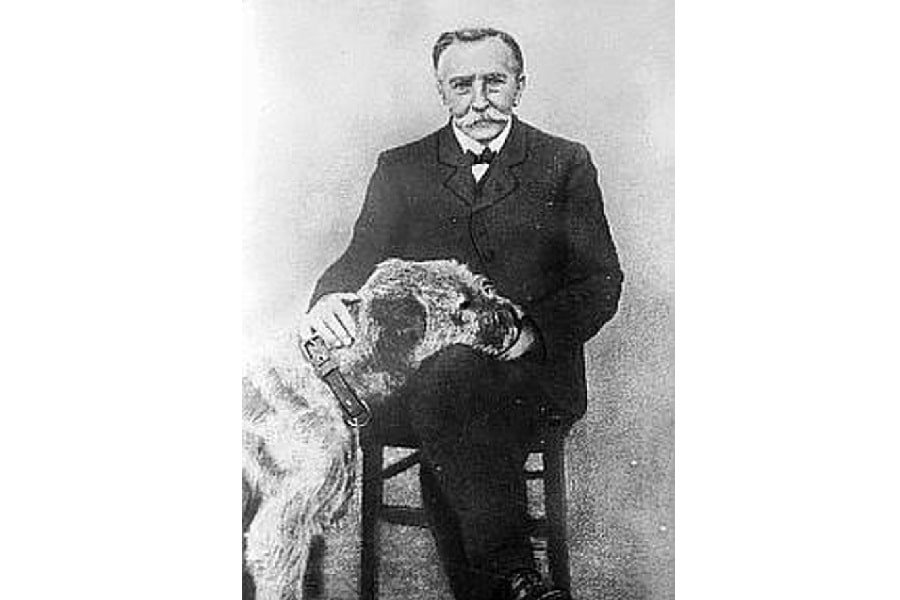
Born in Belgium and raised in France, Charles Boursel worked as an engineer for a telegraph company. He made improvements to existing models of the telegraph before deciding to experiment with electrical systems.
He was able to transmit speech electrically by creating an electromagnetic telephone. Unfortunately, his receiving device was unable to convert the electric signal back into clear, audible sounds.
He also wrote a memorandum on the transmission of human speech by using an electric current. He published the article in a Paris magazine. Meucci claimed his first attempt to make a telephone came shortly afterward.
Johann Phillip Reis

Phillip Reis was instrumental in the invention of the telephone. In 1861, he created a device that captured the sound and converted it into electrical impulses. These would, then, travel through wires and reach the receiver.
Reis called his microphone “the singing station” since he wanted to invent a device for broadcasting music. A patent dispute ensued in which Thomas Edison came out on top, despite having made the device after Reis.
Thomas Edison used the ideas provided by Reis to develop his carbon microphone. About Reis, he said:
The first inventor of a telephone was Phillip Reis of Germany [. . .]. The first person to publicly exhibit a telephone for transmission of articulate speech was A. G. Bell. The first practical commercial telephone for transmission of articulate speech was invented by myself. Telephones used throughout the world are mine and Bell’s. Mine is used for transmitting. Bell’s is used for receiving.
Thomas Edison
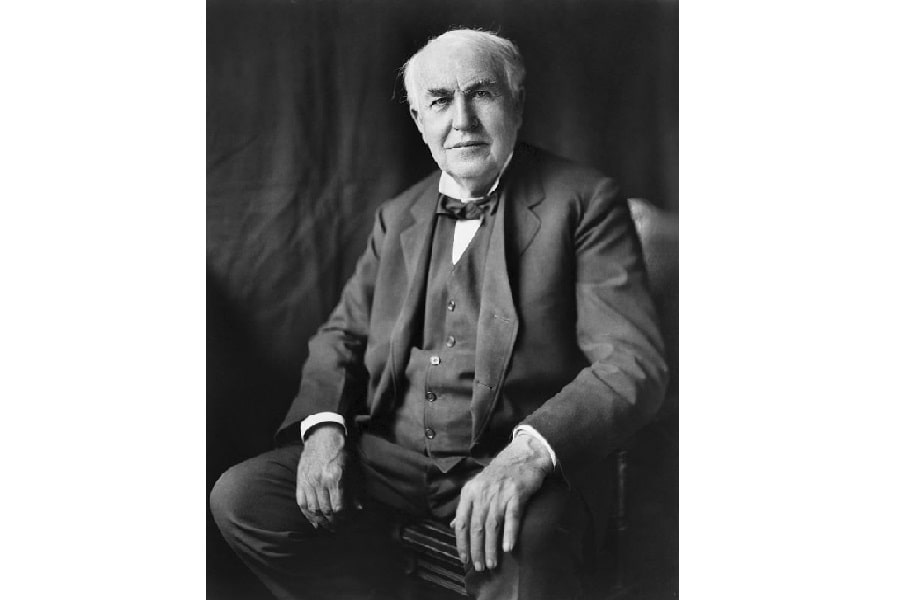
Thomas Edison is a popular name, known primarily for his contributions to introducing a lightbulb. But, Thomas was less of an inventor and more of an entrepreneur, who was often more interested in gathering novel things than inventing them.
For instance, his contributions to the electric light often spark much controversy when compared to the work of Nikola Tesla. But, like in his other inventions, he did add important flourishes to the final, practical product.
When it comes to the carbon microphone, he was experimenting with it at the same time when David Edward Hughes was working on transmitters and “the microphone effect” and Emile Berliner was working on a loose-contact transmitter. All three of them based their works on the study of Phillip Reis.
David Edward Hughes
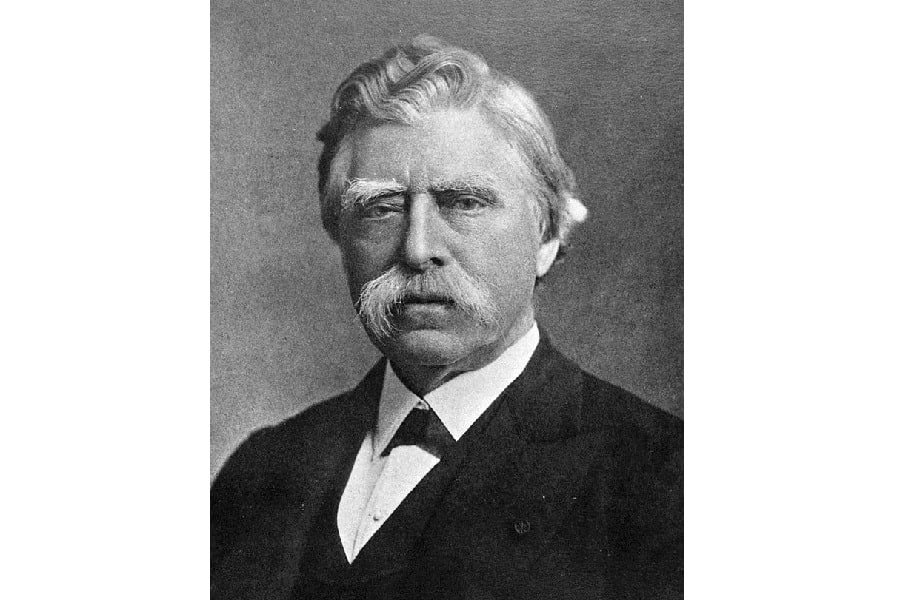
David Edward Hughes was the real force behind the invention of the carbon microphone, even though Edison took all the credit. Hughes had demonstrated his device to the members of the public and most people consider him the “real” inventor of the carbon microphone.
Hughes chose not to take out a patent. He wanted his gift to be a gift to the world. On the other side of the world, in the US, both Edison and Emile Berliner competed in a race for acquiring the patent.
When Edison won the patent, he was officially credited with the invention of the microphone, even though the word itself was coined by Hughes. The microphones we use today are direct heirs of the carbon microphone.
Elisha Gray

Before we get to Bell, here is another significant name to add to the list: Elisha Gray.
Elisha Grey was the co-founder of the Western Electric Manufacturing Company and is remembered for the development of the telephone prototype in the late 1800s. This was a few years after Alexander Graham Bell obtained the patent for telephone technology.
Here’s the catch: there have been several allegations that Bell stole the idea of a liquid transmitter from Elisha, who had been experimenting with and using them for years.
This entire matter is shrouded in controversy and some people claim that Elisha Grey should be credited for the invention of the telephone. After many legal battles, courts have mostly favored Bell.
Alexander Graham Bell
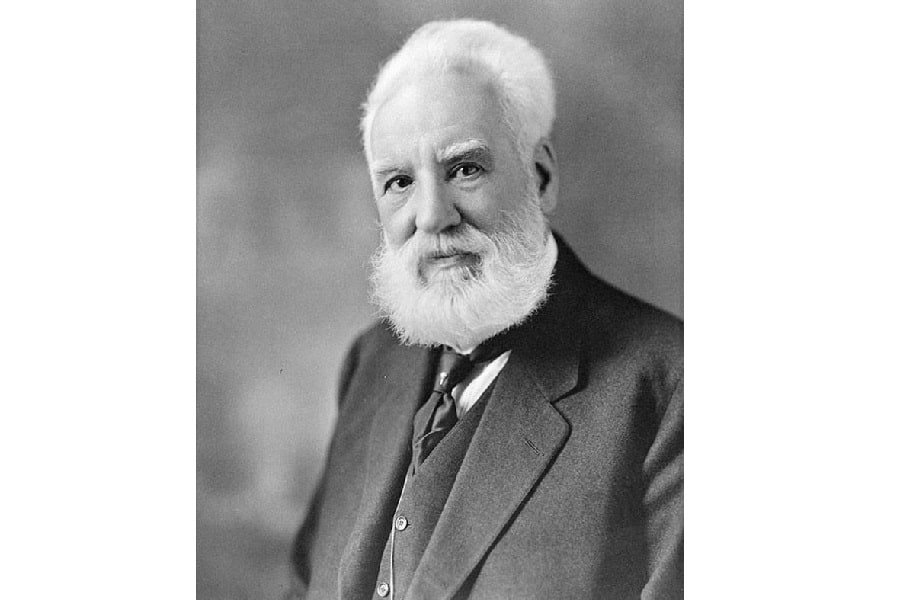
And, so we finally get to Alexander Graham Bell, the man who went to the patent office and, supposedly, influenced the people there to grant him the patent before others.
Bell patented the phone as an “apparatus for transmitting vocal or other sounds telegraphically.”
Both Antonio Meucci and Phillip Reis were the foremost pioneers but they were unable to make a complete device that performed in all practical arenas. Alexander Graham Bell’s device, on the other hand, could be seen as the first practical telephone.
The claims and counterclaims regarding the invention of early telephones abound, only the patents of Bell and Edison are commercially decisive. The zeitgeist flowers Bell with all the praise.
The telephone started evolving from this point forward. All forms of the modern telephone can be traced back to the inventions of all the aforementioned gentlemen.
When Was the Telephone Invented?
It depends on what you consider the “invention of the telephone.”
The Analog Devices
The earliest form of the mechanical telephone, the one invented by Robert Hooke, was made in 1667. In 1672, Francis Bacon suggested the use of pipes for transmitting sound. In 1782, a French monk, Dom Gauthey, started experimenting with Francis’ idea.
The First Telegraphs
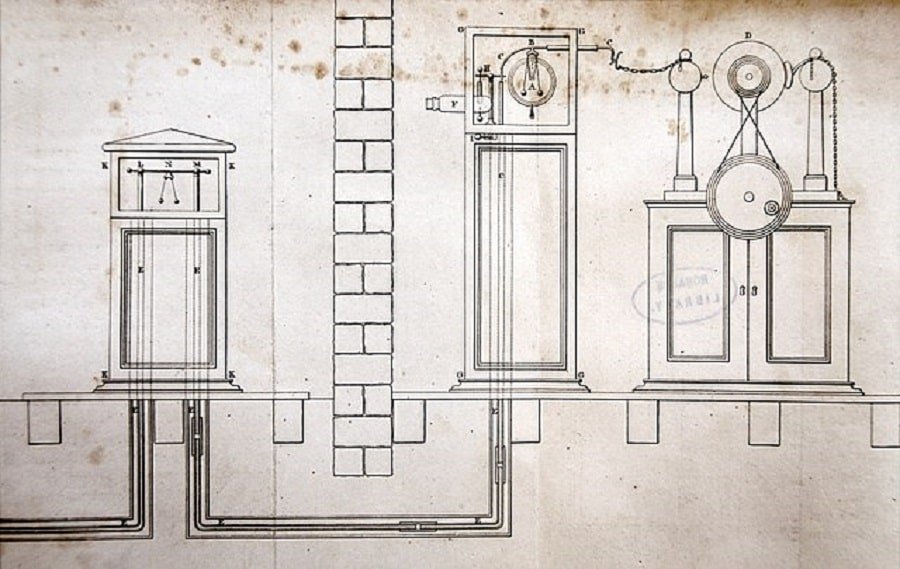
The first working telegraph was made in 1816 by an English inventor, Francis Ronalds. Baron Schilling made an electromagnetic telegraph in 1832, followed by Carl Friedrich Gauss and Wilhelm Weber in 1883, who made a different electromagnetic telegraph.
The First Telephones
By improving all these devices, we eventually got to the telephone in the mid-19th century. Antonio Meucci constructed his telephone-like device during the years 1849-1854. 1854 is also the year in which Charles Bourseul wrote his memorandum on the transmission of sound.
Reis constructed his first prototype in the year 1862, a few years before Bell would perfect the design. His work was presented in the United States in 1872, where it started to pique the interest of entrepreneurs and engineers.
David Edward Hughes invented his carbon microphone in 1878 in England. Thomas Edison and Emile Berliner followed suit in the US. Interestingly, Edison was awarded the patent for the microphone in 1877, but Hughes had demonstrated his device much earlier but took the time to work out the kinks.
Elisha Gray made his telephone in 1876, the same year as Alexander Graham Bell. Here is where the story gets interesting.
Gray had signed the documents, had them notarized, and submitted them to the US Patent Office on the 14th of February, 1876. The very same morning, Bell’s lawyer submitted a patent application. Whose application arrived first was contested. Gray believed that his application had reached the offices before Bell’s application.

The Patent Drama
According to one account, Bell’s lawyer found out about Gray’s device and his lawyer’s intention of delivering the application on the morning of the 14th. He then added similar claims to Bell’s application and delivered it to the office. It reached the office at noon. Gray’s application had made its way to the office in the morning.
Well then, how was Bell awarded the patent?
Bell’s lawyer hustled to get the application to submit the application on the same day, so he could later claim that it had arrived first – since the record would show that both applications had arrived on the same day. Bell was away during this period of time and in all probability, could not have known that his application had been filed.
The examiner was annoyed at the issue and suspended Bell’s application for 90 days. During this time, Bell was informed of the situation and he resumed his work. After the mess of all the legalities and technicalities, the examiner noted that:
. . . while Gray was undoubtedly the first to conceive of and disclose the [variable resistance] invention, as in his caveat of February 14, 1876, his failure to take any action amounting to completion until others had demonstrated the utility of the invention deprives him of the right to have it considered.
The entire incident did not sit well with Gray, who challenged Bell’s claims. Two years of litigation yielded nothing but disappointment for him as Bell was awarded the rights to the telephone. Alexander Graham Bell was the official inventor of the telephone.
The First Telephone Call
The first telephone call was made by Alexander Graham Bell in 1876 when he said the words:
“Mr [Thomas] Watson, come here. I want to see you.”

Evolution of the Telephone
A mobile phone is a cool little gadget, but it took a long time to make the first cellular phone. Charting the progress from electrical telephones to cell phones is certainly no easy task. But, let’s try it, anyway.
Get ready for a lot of firsts as we look at some of the most important innovations along the way:
The First Permanent Outdoor Telephone Wire
The first permanent outdoor telephone wire was placed in Nevada County, California in 1877. It was 97km long and was operated by the Ridge Telephone Company.
Along with the rise of the commercial telephone service phenomenon, outdoor wiring helped the telephone network become increasingly dense.
The Arrival of the Telephone Service
By the time, the telephone was available as a product, electrical telegraphs were already a common phenomenon. Stock exchanges, governmental institutions, large corporations, and the homes of the elite class already employed and used them.
The underlying structure and network of the telegraph systems allowed the telephone networks to easily map themselves according to the existing schema.
Telephones had already arrived in the market and were being used. But, they had to be connected directly, which of course, restricted their use in a major fashion. All of this had to change, and change it did, with the arrival of the telephone exchange.
By 1877, Friedrichsberg near Berlin had a commercial telephone company, the first one of its kind.
The Telephone Exchange
The telephone exchange was a big deal at the time. It was single-handedly responsible for the commercial rise of telephone technology.
A telephone exchange connects individual subscriber lines, enabling users to connect with each other. It was a web of sorts: all paths led here. Calls would arrive here and the operators would forward them to the desired receiver.
This idea was the brainchild of a Hungarian engineer, Tivadar Puskas. When Bell invented the telephone or claimed to have done so, Puskas was working on his idea of an exchange.
“Tivadar Puskas was the first person to suggest the idea of a telephone exchange,” claimed Thomas Edison, with whom Puskas started working shortly afterward.
Based on Puskas’ ideas, the Bell Telephone Company built the first exchange in 1877 – thanks to George W. Coy, Herrick P. Frost, and Walter Lewis -, and Puskas set up one in Paris, a couple of years later. The former is often considered the first telephone exchange in the world. Before you know it, commercial telephone service became a thing.
Puskas later developed the technology for “Telephone News Service” and was awarded a patent in 1892. His model was the precursor to the radio.

The First Transcontinental Telephone Line
The first long-distance call took place in 1915. A transcontinental telephone line was placed for this purpose between New York City and San Francisco.
Graham Bell placed the call from 15 Dey Street and it was received at 333 Grant Avenue by his former assistant and colleague, Thomas Watson.
The transcontinental telephone line linked the Atlantic seaboard with the West Coast. It is generally referred to as the New York-San Francisco line.
The First Transatlantic Telephone Line
Transatlantic telephone cables were placed to take the idea of a local telephone network to the global level.
This was, by no means, the first remote transatlantic communication. Transatlantic telegraphs had existed before. But, once the transatlantic telephone cables were installed, there was no need for telegraphs anymore.
The first transatlantic call took place between the President of the company now known as AT&T, Walter S. Gifford, and the head of the British General Post Office, Sir Evelyn P. Murray.
The Humble Beginnings of the Mobile Phone
The cell phone is a fairly modern invention, but its roots go back to the early years of the 20th century, the first mobile phone service started appearing in German railway systems. In 1924, Zugtelephonie AG was founded and they started supplying telephone equipment for use in trains. By 1926, mobile telephone systems were being used by Deutsche Reichsbahn in Germany.
Instead of hampering the progress of mobile technology, the Second World War quickened it. With the increased military urgency, there were many advances in mobile communications. Gradually, military vehicles started using two-way radios to coordinate their movements and plans.
After the war, vehicles like railroad trains, taxicabs, and police cruisers started using two-way mobile communication systems. Companies in US and Europe were offering these large systems. They were large, power-hungry devices that were not exactly practical.
From here, small advances would take us to the inevitable launch of the first cell phone.
Mobile Phone Networks
AT&T’s Bell Labs introduced a mobile service in 1946, which was commercialized by 1949 as the Mobile Telephone Service.
The First Handheld Mobile Phone

In 1973, Motorola built the first cell phone. Martin Cooper and his team beat Bell Labs to the punch and stepped into a news conference to unveil the product. The product would go on to revolutionize communication in the next couple of decades.
The DynaTAC 8000x, although demonstrated earlier, came out a decade later and the rest is history.
Conclusion
We could go on to discuss digital cordless phones, the first tri-band GSM phone, the first camera phone, the first touchscreen phone, and several other firsts in the world of cellular phones, such as the first Android phone and the first iPhone.
The history of the telephone is a messy web of separate incidents and narratives, all of which happen to intersect and coincide in a unique fashion. From the controversy surrounding the first telephone to the development of the telephone network, all offer an insight into the minds of the pioneers who helped shape the modern understanding of our world.